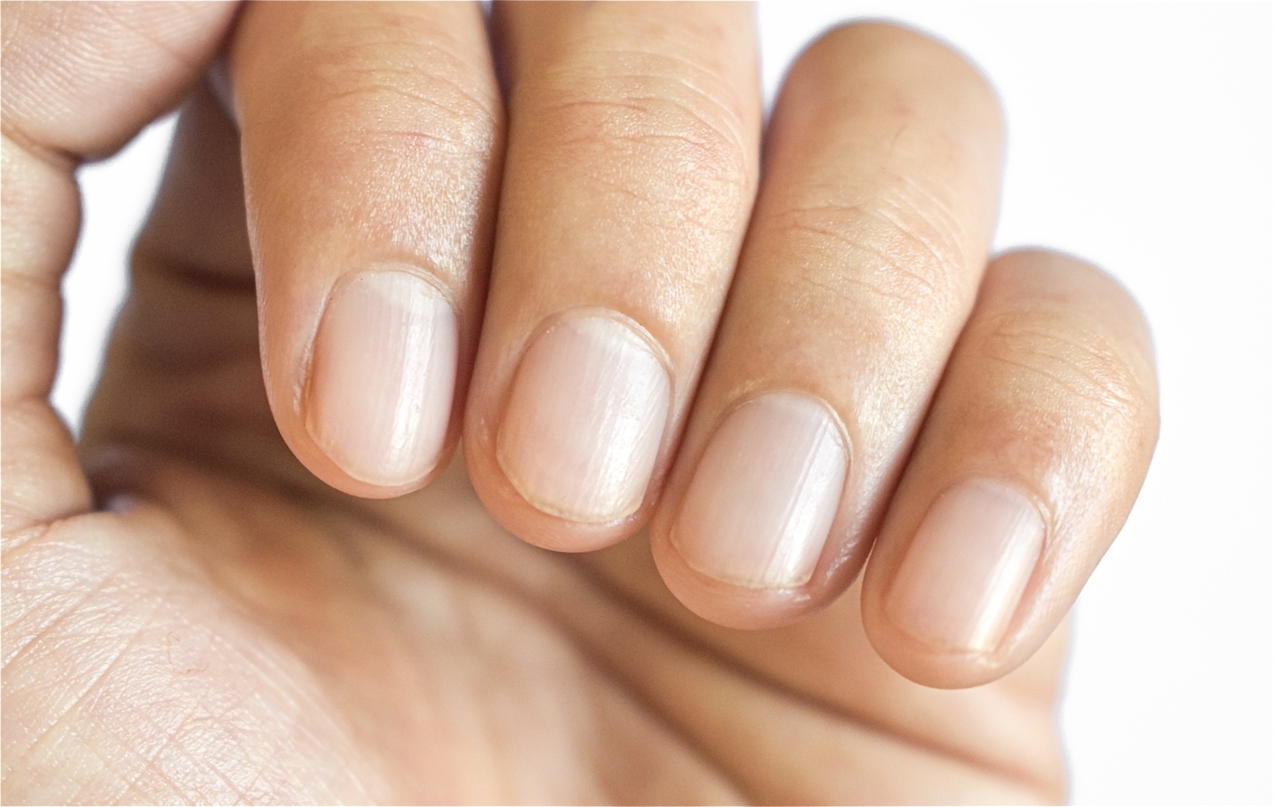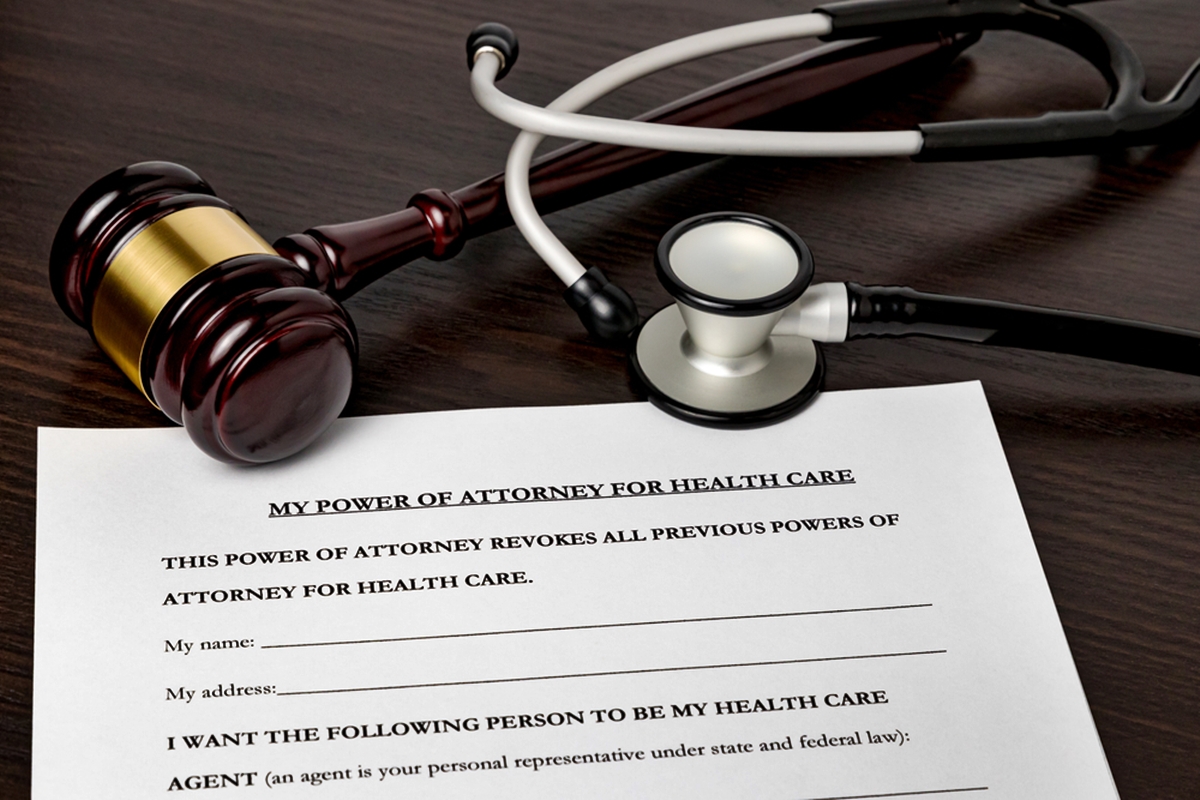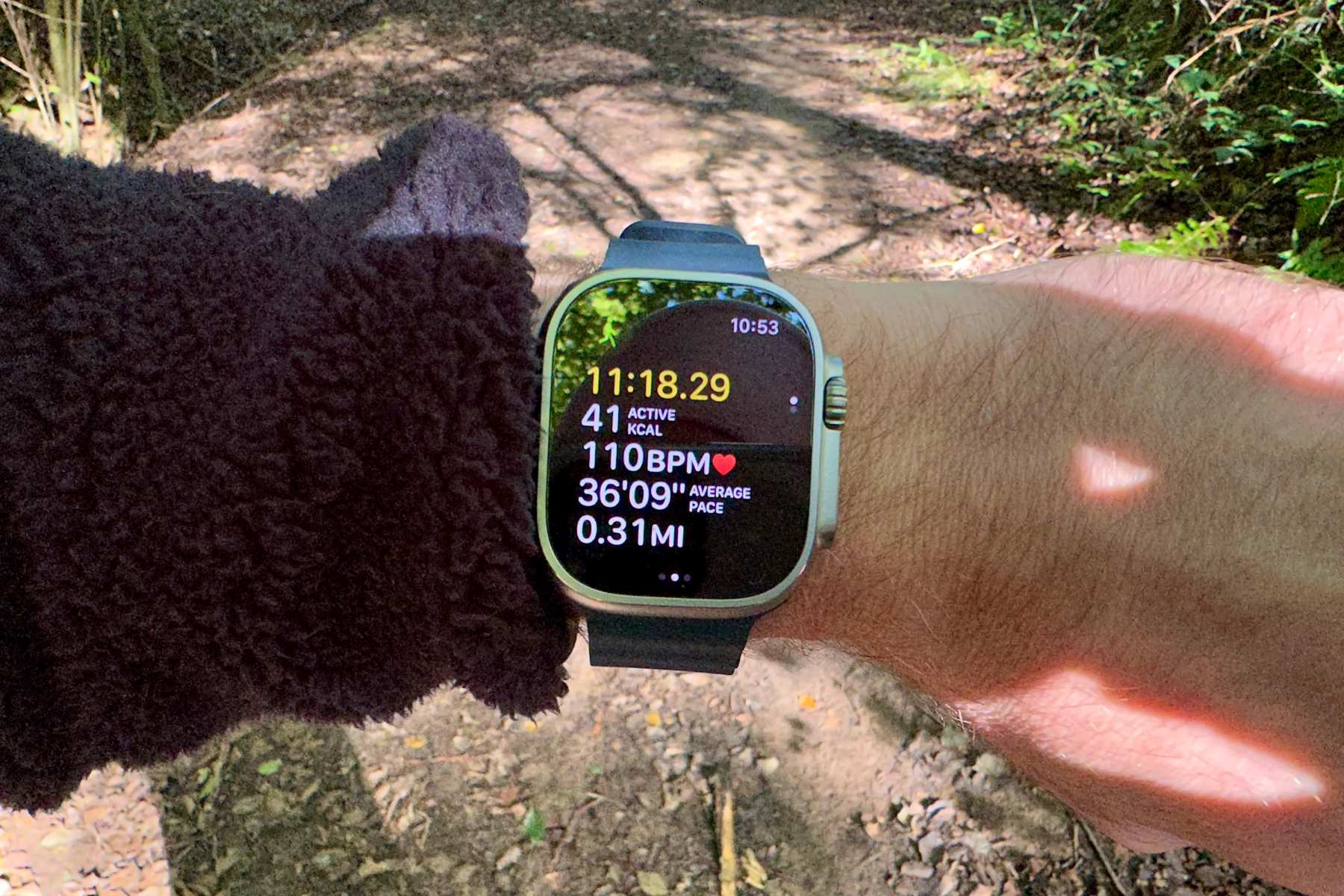Home>Misc>Featured>What Do Fingernails Say About Your Health


Featured
What Do Fingernails Say About Your Health
Published: August 30, 2023
Discover what your fingernails can reveal about your overall health in this featured article. Learn how to spot potential health issues just by looking at your nails.
Introduction
Our fingernails not only serve a functional purpose but also reveal important clues about our overall health. The condition of our nails can indicate various underlying health issues, ranging from minor deficiencies to more serious medical conditions. Therefore, paying attention to the appearance and texture of your nails is essential in maintaining good health.
In this article, we will explore common nail issues and their potential health significance. By understanding what your fingernails may be trying to tell you, you can take proactive steps towards improving your well-being.
The nails consist of layers of a protein called keratin and are composed of several parts, including the nail plate, nail bed, and cuticle. They grow approximately 1mm per week and may take around 3 to 6 months to completely regenerate.
Changes in the color, shape, texture, and strength of the nails can be a sign of an underlying health problem. By identifying these changes and understanding their implications, you can work with your healthcare provider to address any potential concerns.
It’s essential to note that while nail changes can suggest certain conditions, they are not definitive indicators on their own. Consulting with a medical professional is always advisable for a proper diagnosis and appropriate treatment.
Now, let’s dive into the world of fingernails and explore the potential health issues that can be reflected through their appearance.
Common Nail Issues and Their Possible Health Significance
Our nails can develop a range of issues, from discoloration to texture changes, which can provide valuable insight into our health. Here, we will explore some common nail issues and their potential health significance:
- Pale or White Nails: Nails that appear pale or white can indicate a variety of health conditions, such as anemia, malnutrition, liver problems, or kidney dysfunction. If your nails consistently appear pale, it’s important to seek medical advice for a proper diagnosis and treatment.
- Yellow Nails: Yellow nails can be a sign of fungal infection or a condition called yellow nail syndrome, which may indicate respiratory or lymphatic system disorders. Additionally, excessive use of nail polish or smoking can cause nail yellowing. If you notice persistent yellowing, it’s advisable to consult a healthcare professional for further evaluation.
- Blue Nails: Nails that appear blue may be a sign of poor oxygen circulation, known as cyanosis. This can be an indication of lung or heart problems, such as pulmonary disease or a heart defect. If your nails consistently appear blue, it’s crucial to seek immediate medical attention.
- Brittle or Split Nails: Nails that are brittle or easily split may be a result of frequent exposure to water, harsh chemicals, or overuse of nail treatments. However, they can also signify a deficiency in vitamins or minerals, such as biotin, vitamin A, or calcium. Improving your diet and using nail-strengthening products may help alleviate these issues, but if the problem persists, consult with a healthcare professional.
- Ridged Nails: Vertical ridges on the nails are typically a normal sign of aging. However, horizontal ridges, also known as Beau’s lines, can indicate severe illness or injury, such as uncontrolled diabetes, circulatory problems, or trauma. If you notice significant ridges or Beau’s lines, it’s essential to seek medical advice for proper evaluation and treatment.
- Spoon-shaped Nails: Nails with a concave shape, resembling a spoon, may be a sign of iron deficiency anemia. This condition can cause fatigue, weakness, and pale skin. If you notice spoon-shaped nails, it’s important to speak with a healthcare professional to rule out any underlying conditions and receive appropriate treatment.
These are just a few examples of common nail issues and their possible health significance. It’s crucial to remember that while nail changes can provide valuable clues, a proper diagnosis can only be made by a medical professional. If you have concerns about the appearance or health of your nails, it is always recommended to seek professional advice.
Pale or White Nails
Pale or white nails, also known as leukonychia, can be a concerning sign that warrants attention. While sometimes a temporary occurrence due to external factors like trauma or applying nail polish, persistent pale or white nails may indicate an underlying health condition.
One possible cause of pale nails is anemia, which occurs when your body lacks sufficient red blood cells or hemoglobin. Anemic individuals may have pale or white nails due to reduced oxygen levels in the blood. Other symptoms of anemia may include fatigue, weakness, and shortness of breath.
Malnutrition can also lead to pale nails. When the body lacks essential vitamins and minerals, such as iron, zinc, or vitamin B12, it can manifest in pale nail coloration. The nails may lose their healthy pinkish hue and appear pale or even translucent. Proper nutrition and a well-balanced diet can help address this issue.
In some cases, pale or white nails can be a sign of liver problems. Liver diseases, such as hepatitis or cirrhosis, can impact the nail color, causing them to become pale. These conditions require medical intervention and should be diagnosed and treated by a healthcare professional.
Kidney dysfunction can also be associated with pale nails. Kidneys play a vital role in filtering waste products from the blood, and when they are not functioning properly, it can affect the appearance of the nails. Pale or white nails accompanied by other symptoms, such as changes in urine output or swelling, should be evaluated by a healthcare provider.
In some cases, pale nails may be indicative of a more serious condition, such as heart disease or lung problems. These conditions can affect the oxygen levels in the body and lead to pale nail beds. If you have concerns about your heart or lung health, it is essential to consult with a medical professional for a thorough evaluation.
It is important to note that pale or white nails can have various causes, and self-diagnosis is not recommended. If you consistently notice pale or white nails, it is advisable to seek medical advice for proper evaluation and treatment. Your healthcare provider will assess your symptoms, perform necessary tests, and develop an appropriate plan of action based on their findings.
Remember, the appearance of your nails provides valuable clues about your overall health. By paying close attention to any changes, you can take proactive steps towards improving your well-being and addressing potential health concerns.
Yellow Nails
Yellow nails can be a worrisome sight, as they often indicate an underlying issue that needs attention. While staining from nail polish or fungal infections can cause temporary yellowing, persistent yellow nails may be a sign of an underlying health condition that requires further investigation.
A common cause of yellow nails is a fungal infection, particularly onychomycosis. Fungal infections can occur when fungi invade the nail bed, leading to discoloration, thickening, and brittle nails. If you suspect a fungal infection, it is important to consult with a healthcare professional for proper diagnosis and treatment.
Yellow nail syndrome is another potential cause of yellow nails. This rare condition is often associated with respiratory disorders or lymphatic system abnormalities. Along with yellow nails, individuals with yellow nail syndrome may experience swelling and respiratory difficulties. It is crucial to seek medical attention if you notice these symptoms.
Excessive use of nail polish or nail products can also contribute to yellow nails. Repeated application of dark-colored or low-quality nail polish can stain the nails over time. Similarly, using harsh chemicals or improper nail care techniques may cause yellowing. Giving your nails a break from nail products and adopting proper nail hygiene practices can help restore their natural color.
Smoking is another factor that can contribute to yellow nails. The chemicals in cigarettes can cause discoloration and yellowing of the nails. Quitting smoking not only promotes healthier lungs and overall well-being but can also help prevent further yellowing of the nails.
In some cases, yellow nails may be a sign of more serious underlying health conditions, such as psoriasis, diabetes, or thyroid diseases. These conditions can affect the nails’ appearance and require medical attention for proper diagnosis and management.
If you notice persistent yellowing of your nails, it is important to consult with a healthcare professional. They can evaluate your symptoms, ask about your medical history, and perform any necessary tests to determine the underlying cause. Based on the diagnosis, appropriate treatment options can be recommended.
Remember, yellow nails may signify various causes, ranging from benign to more serious conditions. Seeking professional medical advice will help ensure proper identification of the underlying issue and enable timely treatment.
Blue Nails
Blue nails, also known as cyanosis, can be a concerning symptom that may indicate poor oxygen circulation in the body. While cyanosis can occur in the nails, lips, and skin, the focus of this section will be on the potential health significance of blue nails.
One of the main causes of blue nails is a lack of oxygen in the bloodstream. This can be a result of respiratory or cardiovascular problems. Conditions such as chronic obstructive pulmonary disease (COPD), pneumonia, or asthma can impair the normal exchange of oxygen and carbon dioxide in the lungs, leading to bluish discoloration of the nails.
Cardiovascular issues can also contribute to blue nails. Congenital heart defects, heart failure, or other cardiovascular conditions can affect the blood supply and oxygenation, resulting in cyanosis. If you notice blue nails along with symptoms like shortness of breath, chest pain, or rapid heartbeat, it is crucial to seek immediate medical attention.
In some cases, cold temperatures can cause temporary blue nails due to vasoconstriction, where blood vessels narrow and restrict blood flow. Raynaud’s disease is a condition characterized by exaggerated vasoconstriction in response to cold or stress, leading to blue or purple discoloration of the fingers or toes. If you consistently experience these color changes, it’s important to discuss them with a healthcare professional.
In rare instances, blue nails can be a sign of methemoglobinemia, a condition in which the blood’s ability to carry oxygen is impaired. This can be an inherited condition or a result of exposure to certain medications or chemicals. If you suspect methemoglobinemia, prompt medical evaluation is necessary.
It is important to note that blue nails should not be ignored, especially if they are accompanied by other symptoms or if they appear suddenly and persistently. Seeking medical advice is crucial to determine the underlying cause and receive appropriate treatment.
Your healthcare provider may perform various tests, including blood tests, imaging studies, or pulmonary function tests to identify the cause of the blue nails. Treatment will depend on the underlying condition and may involve medications, lifestyle changes, or other interventions to improve oxygen levels in the body.
If you notice persistent blue nails, do not delay seeking medical attention. Early diagnosis and intervention can help address the underlying issue and prevent further complications.
Brittle or Split Nails
Having brittle or split nails can be a frustrating experience, as it can make everyday tasks difficult and affect the appearance of your hands. While occasional nail breakage can be attributed to external factors, persistent brittle or split nails may indicate underlying issues that should not be ignored.
One common cause of brittle or split nails is frequent exposure to water and harsh chemicals. Excessive handwashing, swimming, or using cleaning products without proper protection can strip the nails of their natural oils, leading to dryness, weakness, and breakage. Protecting your hands and nails with gloves and applying a moisturizing nail product can help improve their resilience.
Nail treatments, such as gel manicures or acrylics, can also contribute to nail brittleness. These procedures involve the application of substances that may weaken the nails over time. Taking breaks between treatments and using vitamin-infused polishes or strengthening products can help minimize damage.
Nutritional deficiencies can affect the health of your nails as well. A lack of essential vitamins and minerals, such as biotin, vitamin A, or calcium, can lead to brittle or weak nails. Incorporating a balanced diet rich in fruits, vegetables, whole grains, and lean proteins can provide the necessary nutrients for healthy nail growth.
Underlying health conditions can also contribute to brittle or split nails. Hypothyroidism, a condition in which the thyroid gland does not produce enough hormones, can cause nail problems, including brittleness. Other hormonal imbalances or conditions like psoriasis or eczema can also impact the health of your nails. Consulting with a healthcare professional can help identify and address any underlying health issues.
It is important to note that nail brittleness can be improved with proper care and attention. Here are some tips to promote healthier nails:
- Keep your nails trimmed and filed to prevent snagging and further breakage.
- Avoid biting or picking at your nails, as this can weaken them.
- Moisturize your nails and cuticles regularly with a nourishing oil or cream.
- Limit exposure to harsh chemicals and wear gloves when cleaning or doing activities that can damage your nails.
- Consider using a strengthening nail polish or treatment to improve nail resilience.
If your brittle or split nails persist despite these self-care measures, it is advisable to seek medical advice. A healthcare professional can evaluate your overall health, identify any underlying causes, and provide appropriate treatment or recommendations to improve the health and strength of your nails.
Ridged Nails
Finding ridges on your nails can be a cause for concern, but it’s important to understand that not all ridges are indicative of a serious health issue. In fact, nail ridges are a common occurrence as we age and can often be a normal part of the nail growth process. However, in some cases, ridged nails may signify an underlying health condition or nutrient deficiency.
Vertical ridges running from the cuticle to the tip of the nail are typically a natural consequence of aging. These ridges, also known as longitudinal ridges, are due to a decrease in cell turnover and diminished moisture retention in the nail bed. They are generally harmless and do not require treatment.
On the other hand, horizontal ridges, known as Beau’s lines, can be a more significant indication of a health concern. These ridges are typically wider and more prominent than natural ridges, and they run horizontally across the nail. Beau’s lines can be caused by a variety of factors, including severe illness, nutritional deficiencies, trauma to the nail, or certain medications.
Severe illness, such as high fever, systemic infection, or major surgery, can interrupt the normal nail growth process and lead to the development of Beau’s lines. Additionally, conditions that affect the body’s metabolism, such as uncontrolled diabetes or circulatory problems, can contribute to the formation of horizontal ridges.
Nutritional deficiencies, specifically a lack of essential nutrients like iron, zinc, or biotin, can also result in ridged nails. These deficiencies can weaken the nail structure and impede proper growth, causing ridges to appear.
If you notice significant or sudden ridges on your nails, it is advisable to seek medical advice. Your healthcare provider can evaluate your overall health, discuss any potential contributing factors, and recommend appropriate tests or treatments.
To improve the appearance and health of ridged nails, there are several self-care measures you can try:
- Ensure you have a well-balanced diet that includes essential vitamins, minerals, and proteins.
- Keep your nails and cuticles moisturized with nourishing creams or oils.
- Avoid using harsh chemicals and nail products that may further damage the nails.
- Gently buff the surface of your nails to smooth out minor ridges and enhance their appearance.
- Consider taking dietary supplements or nail-strengthening products after consulting with a healthcare professional.
Remember, ridged nails are a common occurrence and may not always indicate an underlying health issue. However, if you have concerns or notice significant changes in your nail appearance, it is best to consult with a healthcare professional for proper evaluation and guidance.
Spoon-shaped Nails
Having spoon-shaped nails, a condition known as koilonychia, can be a cause for concern. Rather than having a convex shape, spoon-shaped nails have a concave shape, resembling a spoon that is scooped out. This condition can be a sign of an underlying health issue that requires attention.
One of the main causes of spoon-shaped nails is iron deficiency anemia. When the body lacks sufficient iron, it can affect the production of a protein called hemoglobin, which is responsible for carrying oxygen in the blood. Spoon-shaped nails often accompany other symptoms of iron deficiency anemia, including fatigue, weakness, and pale skin. If you suspect iron deficiency, it is important to seek medical advice for proper diagnosis and treatment.
In some cases, spoon-shaped nails may also be associated with certain hereditary conditions, such as hemochromatosis or alpha-thalassemia. Hemochromatosis is a disorder characterized by excessive iron absorption, while alpha-thalassemia affects the production of hemoglobin. A thorough evaluation by a healthcare professional can help determine the underlying cause of spoon-shaped nails.
Other potential contributors to spoon-shaped nails include thyroid disorders and Raynaud’s disease. Thyroid imbalances can affect nail health and result in alterations to their shape and texture. Raynaud’s disease causes blood vessels to constrict in response to cold or stress, which can lead to poor circulation and, in some cases, contribute to the development of spoon-shaped nails.
If you have spoon-shaped nails, there are steps you can take to improve their appearance and address any underlying issues:
- Ensure you have a balanced diet that includes foods rich in iron, such as lean meats, spinach, and legumes.
- Consider taking iron supplements as recommended by a healthcare professional, if necessary.
- Avoid exposure to harsh chemicals or excessive moisture that can weaken the nails.
- Protect your hands and nails from extreme cold or trauma, which may exacerbate spoon-shaped nails.
- Consult with a healthcare professional for proper diagnosis and treatment of any underlying health conditions.
It’s crucial to address the underlying cause of spoon-shaped nails to promote overall health and well-being. By consulting with a healthcare professional, you can receive the necessary guidance and treatment specific to your situation.
Pitted Nails
Having pitted nails can be a cause for concern, as it can be an indication of an underlying health condition. Pitted nails are characterized by small depressions or dents on the surface of the nails, giving them an uneven texture. While there can be various causes for pitted nails, one common condition associated with this symptom is psoriasis.
Psoriasis is an autoimmune disease that primarily affects the skin, causing inflammation and the rapid turnover of skin cells. Nail psoriasis occurs when this inflammatory process affects the nail matrix, leading to pitting, discoloration, and even nail separation. If you have pitted nails along with other symptoms like red, scaly patches on your skin, it is advisable to seek medical advice for proper diagnosis and treatment.
Pitted nails can also be a sign of other skin conditions, such as eczema or alopecia areata. Eczema, also known as atopic dermatitis, can affect the nails, leading to pitting and other irregularities. Alopecia areata, an autoimmune condition that causes hair loss, can also cause pitting of the nails.
In rare cases, pitted nails can be associated with certain types of arthritis, such as psoriatic arthritis or reactive arthritis. These conditions can affect the joints and nails, causing inflammation and nail pitting.
If you have pitted nails, it is important to take steps to manage the underlying cause and protect the health of your nails. Here are some recommendations:
- Consult with a healthcare professional for proper diagnosis and treatment of the underlying condition causing the pitted nails.
- Keep your nails trimmed and filed to minimize the risk of further damage or snagging on clothing or objects.
- Moisturize your nails and cuticles regularly with a nourishing cream or oil to maintain their health and minimize dryness.
- Wear gloves when performing tasks that may expose your nails to excessive moisture or harsh chemicals.
- Consider using a strengthening or protecting nail product to help restore the integrity and appearance of the nails.
It is important to address the underlying cause of pitted nails to ensure proper management and improve the health of your nails. By seeking medical advice and following the recommended treatment plan, you can minimize the impact of the condition on your nails and overall well-being.
Clubbed Nails
Clubbed nails, also known as digital clubbing, is a condition characterized by the enlargement and rounding of the fingertips and nails. This abnormal change in the shape of the nails can be a cause for concern, as it often signifies an underlying health issue that requires medical attention.
One of the primary causes of clubbed nails is a decrease in the oxygen supply to the fingers and nail beds. Conditions that result in chronic low oxygen levels, such as lung diseases like chronic obstructive pulmonary disease (COPD), cystic fibrosis, or lung cancer, can lead to the development of clubbed nails. The exact mechanism of how these conditions cause clubbing is still not fully understood.
Heart diseases, including congenital heart defects, endocarditis, or cyanotic heart diseases, can also contribute to the development of clubbed nails. These conditions can cause poor circulation and inadequate oxygenation, leading to changes in the nail shape.
Liver diseases, such as cirrhosis, can affect blood flow and lead to clubbing. In some cases, gastrointestinal diseases like inflammatory bowel disease (IBD) or celiac disease may also be associated with the development of clubbed nails.
If you notice the growth of clubbed nails, it is crucial to seek medical advice. A healthcare professional will conduct a thorough evaluation and may perform additional tests to determine the underlying cause. These tests may include imaging studies, lung function tests, and blood tests to assess the overall health of the individual.
Managing the underlying condition causing the clubbed nails is paramount to alleviate symptoms and prevent further complications. Treatment may involve managing the underlying disease, such as taking medication to control inflammation in IBD or undergoing surgery to correct heart defects in cases of congenital abnormalities.
It’s important to note that reversing clubbed nails can be difficult once the condition has developed. However, managing the underlying cause can help prevent further progression and improve the individual’s overall well-being.
While clubbed nails are often associated with underlying health conditions, it is essential to remember that not all cases of clubbing indicate a serious problem. Sometimes, clubbed nails can be inherited and unrelated to any medical issue. Nevertheless, it is advisable to consult with a healthcare professional to determine the cause and ensure appropriate management.
Beau’s Lines
Beau’s lines are horizontal ridges that appear on the nails and can be a cause for concern. These lines are often a visible sign of a disruption or trauma that occurred in the nail matrix, the part of the nail responsible for nail growth. Understanding Beau’s lines and their potential causes can help identify and address any underlying issues.
The most common cause of Beau’s lines is severe illness or a significant physiological event that disrupts the nail growth process. These events can include high fevers, major surgery, a systemic infection, or an injury that affects the nail matrix. The disruption temporarily halts nail growth, resulting in the development of horizontal ridges.
Certain skin conditions, such as psoriasis or eczema, can also contribute to the formation of Beau’s lines. The inflammation associated with these conditions can extend to the nail matrix, leading to irregular nail growth and the appearance of ridges.
In some cases, Beau’s lines may result from the use of certain medications or toxins. Chemotherapy drugs, in particular, can affect the rapidly dividing cells in the nail matrix, causing disruptions in the nail growth process. Exposure to toxic substances like arsenic or chemotherapy agents can also lead to the development of Beau’s lines.
It’s important to note that the severity and number of Beau’s lines can provide insights into the timeline of the underlying event. Multiple lines may indicate repeated disruptions, while a single line may suggest a past event.
While Beau’s lines can be a temporary phenomenon, they can also persist if the underlying cause is ongoing or chronic. To address Beau’s lines, it’s essential to identify and manage the underlying condition or trigger:
- Consult with a healthcare professional to determine the cause of Beau’s lines and develop an appropriate treatment plan.
- If the lines are a result of an acute event, such as a high fever or infection, managing the underlying illness is crucial.
- In cases of chronic skin conditions, proper management and treatment can minimize the occurrence of Beau’s lines.
- In situations where medication or toxin exposure is the cause, discuss options with a healthcare provider to minimize the impact on nail health.
In most cases, Beau’s lines will gradually grow out as the nails continue to grow. However, it may take several months for a complete resolution, as the nails typically grow at a rate of around 1mm per week. If you have concerns about Beau’s lines or notice any other unusual nail changes, it is advisable to consult with a healthcare professional for proper evaluation and guidance.
Nail Ridges and Health Conditions
Nail ridges are common nail imperfections that can appear as vertical lines running from the cuticle to the tip of the nail. Although nail ridges are often a normal part of the aging process, in some cases, they can also be associated with underlying health conditions.
Vertical nail ridges, also known as longitudinal ridges, can be a result of the natural aging process and are typically harmless. These ridges become more prominent as we grow older due to a decrease in cell turnover and moisture retention in the nail bed. Most of the time, longitudinal ridges do not require treatment or medical intervention.
However, certain health conditions can manifest as nail ridges and may warrant further evaluation:
- Psoriasis: This chronic skin condition can also affect the nails, leading to the development of pitted nails and ridges. Psoriasis-related nail ridges may be accompanied by other symptoms such as red, scaly patches on the skin.
- Alopecia Areata: An autoimmune condition that causes patchy hair loss can also result in nail changes, including ridges. The presence of nail ridges in conjunction with hair loss may suggest alopecia areata.
- Raynaud’s Disease: People with Raynaud’s disease experience narrowing and spasms of blood vessels in response to cold temperatures or stress. Nail ridges can develop as a result of compromised blood flow and poor circulation.
- Lichen Planus: This skin condition can affect not only the skin but also the nails. Lichen planus-related nail ridges may appear alongside other symptoms such as a rash, itching, or blisters.
- Connective Tissue Disorders: Certain connective tissue disorders like lupus or rheumatoid arthritis can impact nail health and cause the development of nail ridges.
- Iron Deficiency Anemia: In some cases, ridges may be a sign of iron deficiency anemia. This condition arises when the body lacks sufficient iron, affecting the production of red blood cells and oxygen transport.
While nail ridges can sometimes indicate underlying health conditions, it’s important to note that having ridges does not automatically mean a serious health concern. If you have concerns about your nail ridges or if you notice any other unusual changes in your nails, it is essential to consult with a healthcare professional for proper evaluation and guidance.
If the nail ridges are accompanied by other symptoms or if they worsen or change significantly, medical attention is advised. A healthcare professional can conduct a thorough examination, review your medical history, and perform any necessary tests to determine the underlying cause of the nail ridges and recommend appropriate treatment options.
Nail Changes and Nutritional Deficiencies
Our nails can provide valuable insights into our overall health, including deficiencies in essential vitamins and minerals. Nutritional deficiencies can manifest in various nail changes and abnormalities. By recognizing these nail changes, we can identify potential nutrient deficiencies and take steps to address them.
Here are some common nail changes associated with nutritional deficiencies:
- Brittle or Split Nails: Weak and brittle nails that easily split may be a sign of biotin (vitamin B7) deficiency. Biotin is essential for maintaining the strength and integrity of the nails. Including biotin-rich foods such as eggs, nuts, and whole grains in your diet or taking biotin supplements can help improve nail health.
- White Spots: The presence of white spots or bands on the nails, known as leukonychia, can indicate zinc deficiency. Zinc is an essential mineral for overall nail health. Including zinc-rich foods such as seafood, meat, and legumes in your diet can help replenish zinc levels and improve the appearance of your nails.
- Soft or Spoon-shaped Nails: Soft nails that easily bend or have a concave shape resembling a spoon may indicate iron deficiency anemia. Iron is crucial for the production of hemoglobin, which carries oxygen to cells, including the nail matrix. Consuming iron-rich foods such as lean meats, leafy greens, and beans can help address this deficiency.
- Pale or Thin Nails: Pale or thin nails may be a sign of insufficient iron levels or poor blood circulation. In addition to iron-rich foods, incorporating vitamin C-rich foods like citrus fruits or bell peppers into your diet can enhance iron absorption.
- Vertical Ridges: In some cases, vertical ridges on the nails may signify a lack of essential nutrients, such as vitamins A, C, and E, as well as protein. A well-balanced diet that includes fruits, vegetables, whole grains, lean proteins, and healthy fats can provide these nutrients and support overall nail health.
It’s crucial to note that multiple nutrient deficiencies can contribute to nail changes, and the appearance of your nails alone is not a definitive diagnosis. If you suspect a nutritional deficiency, it is recommended to consult with a healthcare professional or registered dietitian for further evaluation and guidance. They can help identify specific nutrient deficiencies through blood tests and design a personalized plan to address your nutritional needs.
In addition to incorporating nutrient-rich foods, you may also consider taking dietary supplements under the supervision of a healthcare professional. However, it’s important to note that supplements should not replace a healthy diet but rather complement it.
By maintaining a balanced diet and addressing any potential nutritional deficiencies, you can support nail health and ensure the overall well-being of your body. Remember to consult with a healthcare professional for proper guidance tailored to your specific needs.
Conclusion
Our fingernails serve as more than just decorative adornments. They can provide valuable insights into our overall health and well-being. Nail issues, such as discoloration, texture changes, or irregularities, can be indicators of underlying health conditions, deficiencies, or other issues that require attention. Understanding these nail changes can help us take proactive steps towards improving our health.
From pale or white nails suggesting anemia or malnutrition to yellow nails signaling fungal infections or potential liver problems, our nails can communicate important messages about our internal health. Blue nails can indicate poor oxygen circulation, while brittle or split nails may point to nutritional deficiencies or external factors like excessive exposure to water or chemicals.
Ridged nails can be a normal part of the aging process, but they can also be associated with conditions such as psoriasis or thyroid disorders. Spoon-shaped nails may signify iron deficiency anemia, while pitted nails can be related to conditions like psoriasis or eczema. Clubbed nails may be indicators of lung, heart, or liver diseases.
Understanding the potential causes of nail changes and consulting with healthcare professionals can help in diagnosing and addressing any underlying issues. Nutritional deficiencies can also manifest as nail changes, such as brittle nails suggesting biotin deficiency or white spots indicating zinc deficiency. Recognizing these signs can lead to dietary adjustments or supplementation guided by healthcare professionals.
It’s important to remember that while nail changes can provide valuable clues about our health, self-diagnosis is not recommended. Seeking proper medical advice and guidance is crucial for accurate diagnosis and appropriate treatment. Healthcare professionals can conduct thorough evaluations, perform necessary tests, and develop tailored treatment plans.
By paying attention to the health and appearance of our nails and addressing any concerns or changes, we can prioritize our overall well-being. Recognizing the significance of our nails as a reflection of our health empowers us to take proactive steps in maintaining a healthy lifestyle and seeking necessary medical care when needed.









